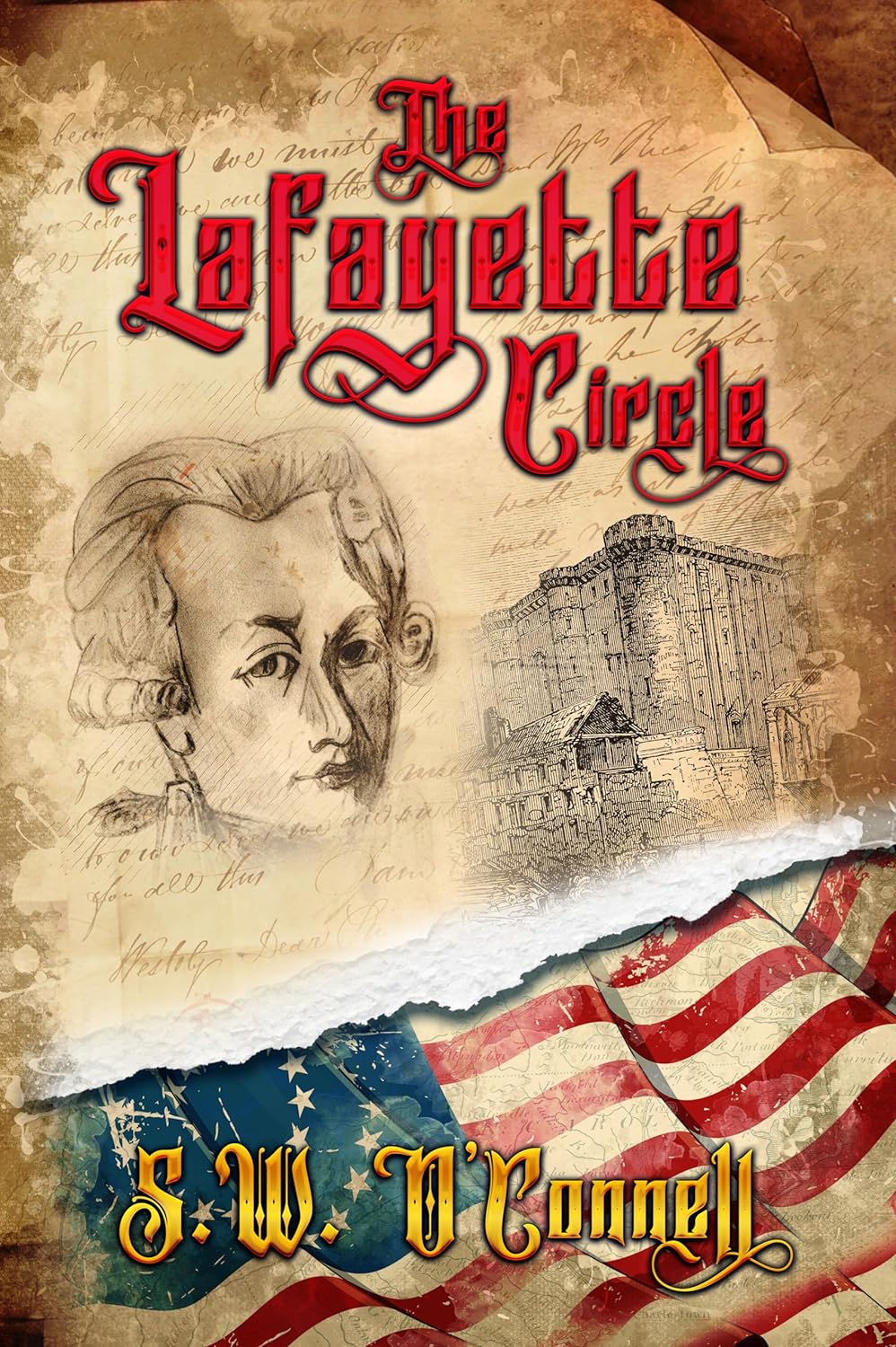S.W. O’Connell is a retired US Army intelligence officer who has served in a wide variety of counterintelligence assignments around the world. Calling on both his experience and his love of history he has written a series of spy novels set during the American Revolution. Now with The Lafayette Circle he has written a thriller that uses Lafayette’s Farewell Tour as the setting for a series of assassination teams. The mysterious Aulic Council representing Prussia, Russia and Austria have determined that a very public assassination of Lafayette as he tours the United States will help make the world safe for absolute monarchy. Arrayed against them are the member of the Lafayette Circle a sort of pickup group of old clerics, shipless sailors and come as you are spooks, a few of whom had been introduced when much younger in the Yankee Doodle Spies Series.
I won’t give you any spoilers other than that Lafayette is not assassinated and the Circle is successful in keeping the attempts out of the news and the historical record. Scott follows the conclusion of the story with a wrap on the significance of Lafayette, which he is allowing me to reproduce here. -PJR
Author’s Notes
Gilbert du Motier, Marquis de Lafayette, was one of those rare types who, by sheer willpower, thrust himself into the pages of history. He did it through the great sacrifice of personal comfort, wealth, and family. He was an idealist who acted on his ideals, seeking pragmatic solutions to complex and sometimes theoretical issues of the day. He was also a man of personal bravery and a great friend to many people of all stations in life.
He had many flaws and made many mistakes. He was not brilliant, nor did he pretend to be. But he had tenacity, a good heart, a sense of right, and an engaging personality. He was willing to stake everything on whatever cause he championed, whether it was American independence, a French constitutional government, the rights of man, and, last but not least, emancipation.
I knew I was taking a risk by inserting him into a novel of this type. How to portray him? Well, I simply took my understanding of him and applied it to the historical situation and then blended it into the fictional assassination plot swirling around him.
Lafayette’s great tour of America is little known today, except in some of the towns and villages he visited in the early decades of America. In some of those precincts, his visit is still the most significant event ever.
Some comments on the story are in order.
The blend of fiction and fact can be daunting. Thus, the cast of characters, glossary, and gazetteer. Those who like such details can sort through them for more context. The Holy Alliance was real, not quite an axis of evil but a pact by autocracy to secure their rights in the face of democracy and liberalism. The real Aulic Council was actually the Austro-Hungarian military’s general staff. I bent its role, making it into the Holy Alliance’s fictional covert operations arm—a Specter-like entity.
But the real Holy Alliance was not pleased with the American experiment, nor with the new democracies cropping up as Spain’s American empire collapsed. Ironically, when Russia parted ways with Austria and Prussia (which became the Second German Reich in 1870) for an alliance with France in 1891, it began a series of events leading to World War twenty-five years later.
The Monroe Doctrine was America’s answer to this. Originally a letter to Congress, it set forth America’s first national security strategy. For it, we can thank President James Monroe and his Secretary of State, John Quincy Adams. I thought trying to portray their interaction in doing so was necessary and kind of fun. Equally important is the controversial election of 1824, which threw an election into the House of Representatives for the second time in American history. Although frustrated by the outcome, America’s heroic General Andrew Jackson would recoup and win the White House in 1828.
The December 1824 letter from President James Monroe to Congress on Lafayette’s visit is used verbatim, as is Speaker of the House Henry Clay’s December 10th, 1824 introductory speech to Congress.
My use of flashbacks was another item I wrestled with. Although they interrupted the flow of the main plot, I felt they added insight into Lafayette’s life and character, a secondary intent of this book.
There were no attacks on General Lafayette, at least none recorded anywhere.
The secret intelligence operation run by Archbishop Maréchal of Baltimore is purely fictional, although there was a bishop by that name at that time. The “Lafayette Circle” and its members are also fiction or fictionalized.
Elizabeth Patterson is a fictionalized version of a real woman who briefly stepped onto the world stage through marriage to the youngest brother of the most powerful man in the world. Although jilted in an awful way, she lived her life gracefully and raised a fine son from the marriage. Her grandson, Charles Bonaparte, was destined to become Attorney General under President Theodore Roosevelt and would create what later became known as the Federal Bureau of Investigation.
Lafayette’s travels are exhausting just to read. In a time when things moved at the speed of a horse or a primitive steamship, he swirled across the new nation in a whirlwind of activity that would tire a man half his age of 67-68. He often made several stops a day, mesmerizing crowds, embracing well-wishers, and engaging American leaders. He talked of the heroic deeds of America’s past, the accomplishments of the present, and the American greatness that was yet to come. He inspired patriotic fervor and issued his own version of a call to arms. All this happened as America was approaching its 50th birthday.
For purposes of the story, I bent a few things regarding his itinerary and some of the venues. For example, the grand dinner in New Orleans did not take place at The Cabildo but at a nearby hotel. I changed the locale for the purposes of the story.
New York did rename the 2nd Artillery Regiment the National Guard in remembrance of the Garde Nationale de Paris that Lafayette commanded during the French Revolution.
Finally, those more interested in this event can satisfy it with the memoir published by Lafayette’s secretary, Auguste Levasseur,
If like me you don’t read French you will be pleased to know that Levaseeur’s work is available in a translation by Alan Hoffman, President of the American Friends of Lafayette. – PJR
As the bicentennial of Lafayette’s visit approaches there will be a lot more about it on this tax blog. My work on the bicentennial is cutting into my tax writing. For overall coverage of the bicentennial go to lafayette200.org. For more on how Scott came to write this book check out his blog.
































































































